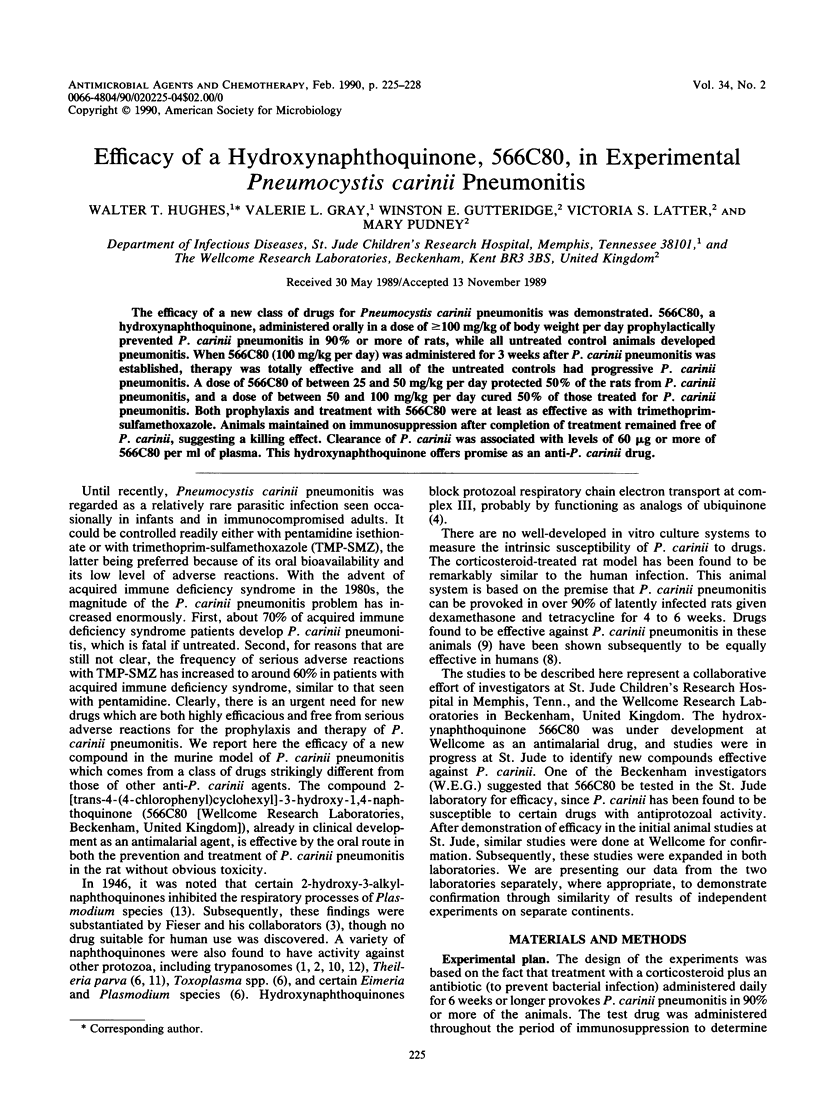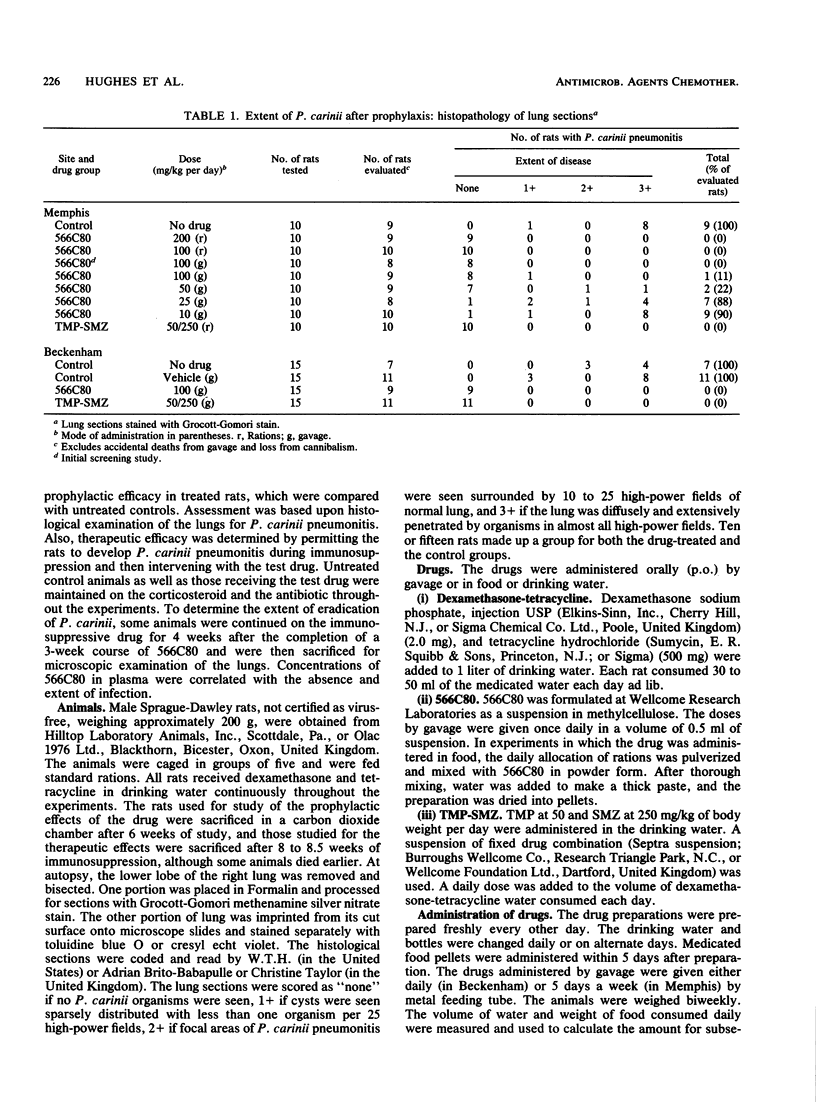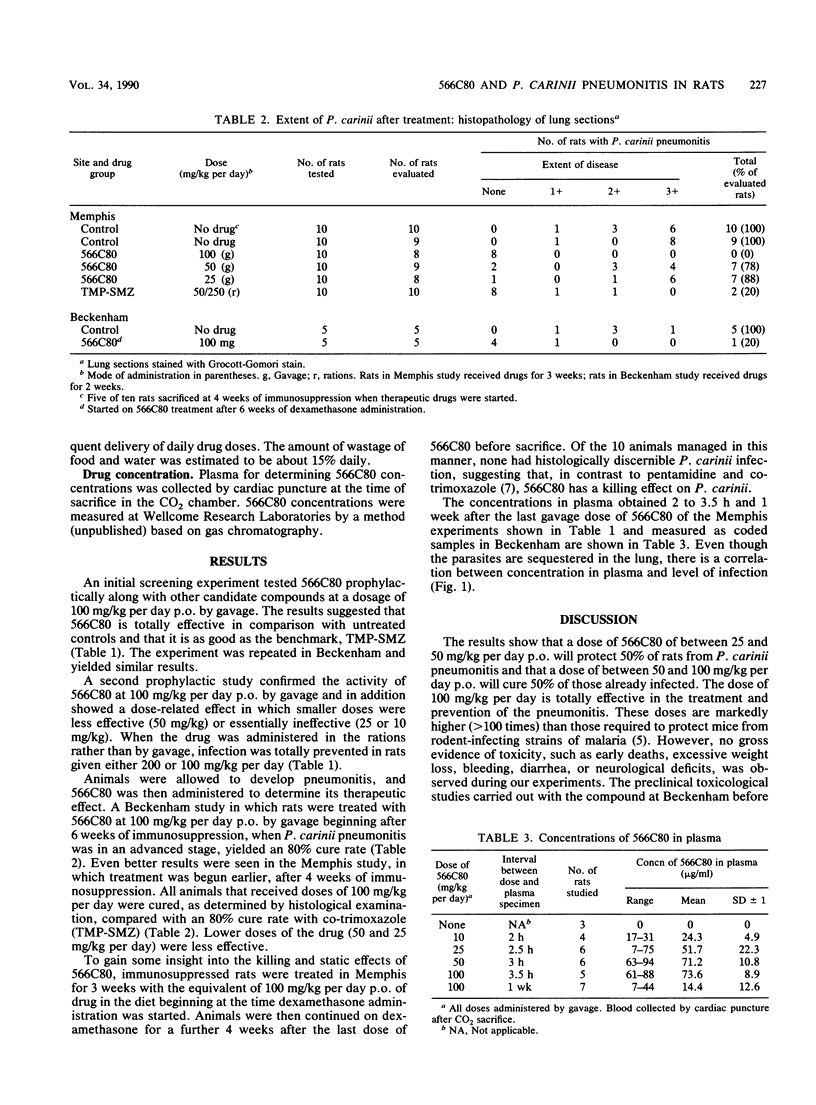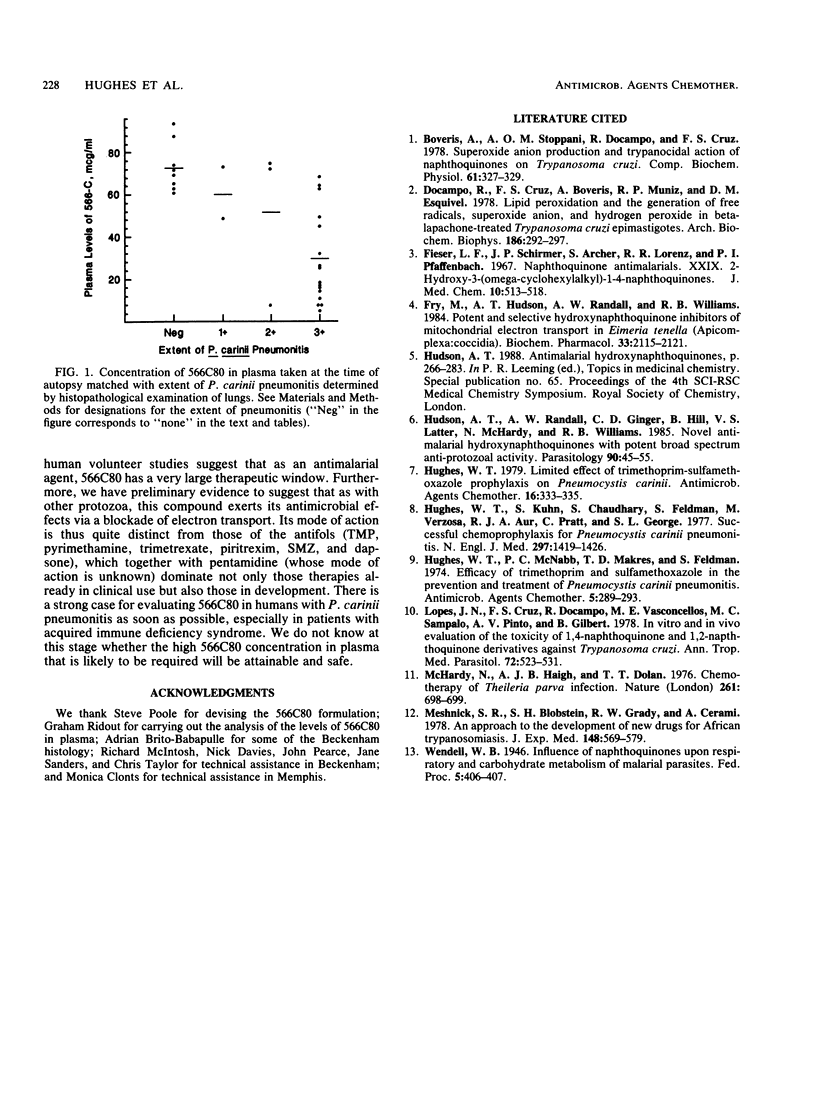Abstract
The efficacy of a new class of drugs for Pneumocystis carinii pneumonitis was demonstrated. 566C80, a hydroxynaphthoquinone, administered orally in a dose of greater than or equal to 100 mg/kg of body weight per day prophylactically prevented P. carinii pneumonitis in 90% or more of rats, while all untreated control animals developed pneumonitis. When 566C80 (100 mg/kg per day) was administered for 3 weeks after P. carinii pneumonitis was established, therapy was totally effective and all of the untreated controls had progressive P. carinii pneumonitis. A dose of 566C80 of between 25 and 50 mg/kg per day protected 50% of the rats from P. carinii pneumonitis, and a dose of between 50 and 100 mg/kg per day cured 50% of those treated for P. carinii pneumonitis. Both prophylaxis and treatment with 566C80 were at least as effective as with trimethoprim-sulfamethoxazole. Animals maintained on immunosuppression after completion of treatment remained free of P. carinii, suggesting a killing effect. Clearance of P. carinii was associated with levels of 60 micrograms or more of 566C80 per ml of plasma. This hydroxynaphthoquinone offers promise as an anti-P. carinii drug.
Full text
PDF



Selected References
These references are in PubMed. This may not be the complete list of references from this article.
- Boveris A., Stoppani A. O., Docampo R., Cruz F. S. Superoxide anion production and trypanocidal action of naphthoquinones on Trypanosoma cruzi. Comp Biochem Physiol C. 1978;61 100(2):327–329. doi: 10.1016/0306-4492(78)90063-1. [DOI] [PubMed] [Google Scholar]
- Docampo R., Cruz F. S., Boveris A., Muniz R. P., Esquivel D. M. Lipid peroxidation and the generation of free radicals, superoxide anion, and hydrogen peroxide in beta-lapachone-treated Trypanosoma cruzi epimastigotes. Arch Biochem Biophys. 1978 Mar;186(2):292–297. doi: 10.1016/0003-9861(78)90438-1. [DOI] [PubMed] [Google Scholar]
- Fieser L. F., Schirmer J. P., Archer S., Lorenz R. R., Pfaffenbach P. I. Naphthoquinone antimalarials. XXIX. 2-hydroxy-3-(omega-cyclohexylalkyl)-1,4-naphthoquinones. J Med Chem. 1967 Jul;10(4):513–517. doi: 10.1021/jm00316a001. [DOI] [PubMed] [Google Scholar]
- Fry M., Hudson A. T., Randall A. W., Williams R. B. Potent and selective hydroxynaphthoquinone inhibitors of mitochondrial electron transport in Eimeria tenella (Apicomplexa: Coccidia). Biochem Pharmacol. 1984 Jul 1;33(13):2115–2122. doi: 10.1016/0006-2952(84)90581-1. [DOI] [PubMed] [Google Scholar]
- Hudson A. T., Randall A. W., Fry M., Ginger C. D., Hill B., Latter V. S., McHardy N., Williams R. B. Novel anti-malarial hydroxynaphthoquinones with potent broad spectrum anti-protozoal activity. Parasitology. 1985 Feb;90(Pt 1):45–55. doi: 10.1017/s0031182000049003. [DOI] [PubMed] [Google Scholar]
- Hughes W. T., Kuhn S., Chaudhary S., Feldman S., Verzosa M., Aur R. J., Pratt C., George S. L. Successful chemoprophylaxis for Pneumocystis carinii pneumonitis. N Engl J Med. 1977 Dec 29;297(26):1419–1426. doi: 10.1056/NEJM197712292972602. [DOI] [PubMed] [Google Scholar]
- Hughes W. T. Limited effect of trimethoprim-sulfamethoxazole prophylaxis on Pneumocystis carinii. Antimicrob Agents Chemother. 1979 Sep;16(3):333–335. doi: 10.1128/aac.16.3.333. [DOI] [PMC free article] [PubMed] [Google Scholar]
- Hughes W. T., McNabb P. C., Makres T. D., Feldman S. Efficacy of trimethoprim and sulfamethoxazole in the prevention and treatment of Pneumocystis carinii pneumonitis. Antimicrob Agents Chemother. 1974 Mar;5(3):289–293. doi: 10.1128/aac.5.3.289. [DOI] [PMC free article] [PubMed] [Google Scholar]
- Lopes J. N., Cruz F. S., Docampo R., Vasconcellos M. E., Sampaio M. C., Pinto A. V., Gilbert B. In vitro and in vivo evaluation of the toxicity of 1,4-naphthoquinone and 1,2-naphthoquinone derivatives against Trypanosoma cruzi. Ann Trop Med Parasitol. 1978 Dec;72(6):523–531. doi: 10.1080/00034983.1978.11719356. [DOI] [PubMed] [Google Scholar]
- McHardy N., Haigh A. J., Dolan T. T. Chemotherapy of Theileria parva infection. Nature. 1976 Jun 24;261(5562):698–699. doi: 10.1038/261698a0. [DOI] [PubMed] [Google Scholar]
- Meshnick S. R., Blobstein S. H., Grady R. W., Cerami A. An approach to the development of new drugs for African trypanosomiasis. J Exp Med. 1978 Aug 1;148(2):569–579. doi: 10.1084/jem.148.2.569. [DOI] [PMC free article] [PubMed] [Google Scholar]


